Capital of the province of Limburg and lying on both banks of the
Maas, Maastricht has much to offer visitors. One of the country's
busiest commercial and tourist centers, Maastricht was founded by the
Romans in 50 BC on an important crossing-point on the Maas where two
military roads met. Fortified in the 3rd century and again in the 14th
century, the town changed hands many times through the years and
suffered numerous sieges. After the establishment of the Kingdom of
Belgium in 1830, its economic development slowed, and by 1867, the
city's fortifications began to be dismantled. The signing of the
Maastricht Treaty in 1992 saw the city become the symbol of the European
Union, with the first meeting of the original 12 member states being
held in Linberg House.
1 The Treasures of Saint Servatius
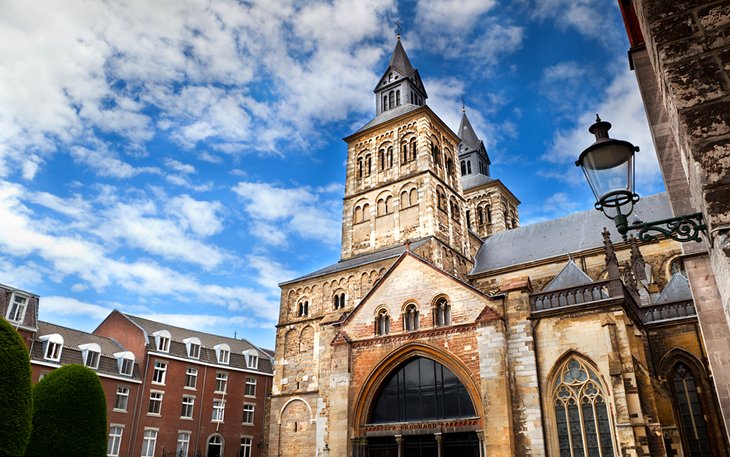
The Treasures of Saint Servatius
Built in the 6th century atop the grave of St. Servatius, the first
Bishop of Maastricht, Roman Catholic St. Servaaskerk is the oldest
church in the Netherlands.
Highlights include the Imperial Hall and the Imperial Gallery, built
between 1165-77, and the fine south doorway, the Bergportaal, with its
Biblical statuary from the 13th century. Other notable features include
the cloister and the splendid vaulting of the nave and transepts added
in the 14th and 15th centuries. The most important part of the old
church, however, is its rich Treasury, now a museum called The Treasures of St. Servaaskerk.
Prime exhibits include a variety of sacred objects, pictures, and
statues, as well as the Late Romanesque chest reliquary housing the
remains of St. Servatius who died in 384 AD, a masterpiece of metalwork
known as the Noodkist (Distress Chest) that's carried around the town
whenever calamity threatens. Also of interest is the crypt, home to the
tomb of Charles of Lorraine, a statue of Charlemagne, and the remains of
a 12th-century altar.
Address: Keizer Karelplein 3, 6211 TC Maastricht
Official site: www.sintservaas.nl/english/index.html
Maastricht Church of St Servatius Map
2 Bonnefanten Museum
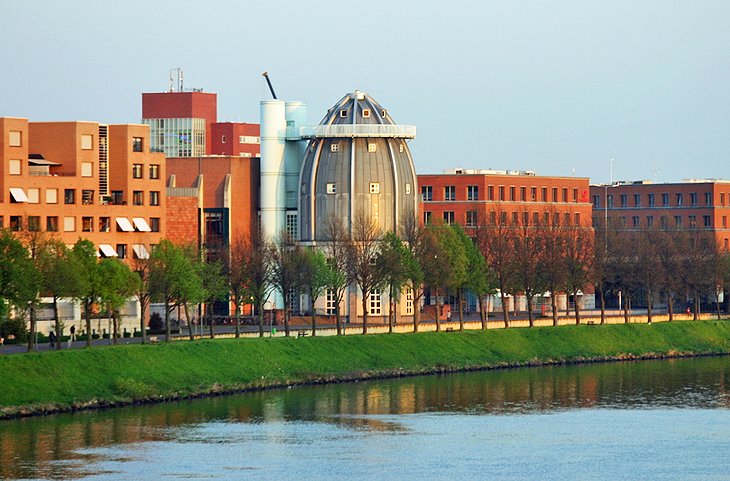
Bonnefanten Museum
Housed in an ultra-modern building on the banks of the River Maas
that resembles a 1950s version of a rocket ship, the superb Bonnefanten
Museum is where you'll find Maastricht's most important art collections.
Named after the museum's former convent home - it was known as the
Bonnefanten for its well-behaved children, the "bons enfants" - this
palatial edifice with its massive conical tower (the aforementioned
rocket ship) houses numerous paintings from the Dutch Masters as well as
many Italian and modern works. The museum also boasts a rich collection
of medieval art, including wooden sculptures from the 13th to 16th
centuries. (English language guided tours are available with advance
notice.)
Address: Avenue Ceramique 250, 6221 KX Maastricht
Official site: www.bonnefanten.nl/en/
3 The Basilica of Our Lady
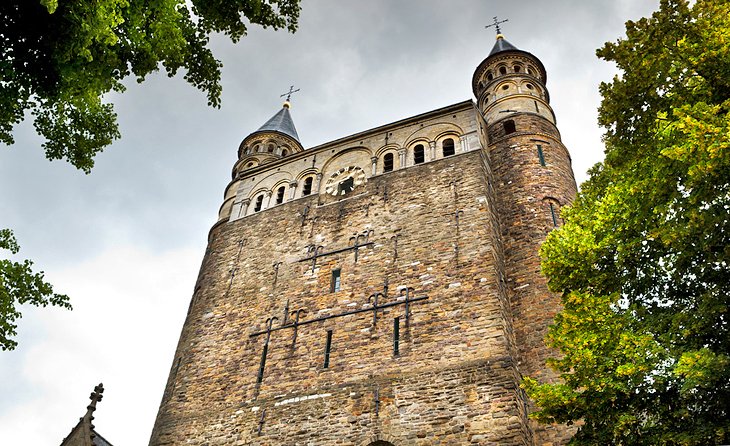
The Basilica of Our Lady
The impressive Basilica of Our Lady (Basiliek van Onze-Lieve-Vrouw)
was built around 1000 AD, although only a portion of the original
survives. In about 1150, the crypts and the transepts were added, while
the east choir was built in the early 1200s, followed by the gallery
over the ambulatory. The fortress-like character of the Romanesque west
work with its two stair turrets recalls the church's former function as
part of the town's fortifications. The Late Gothic choir with its large
crypt is particularly pleasing, as is the side chapel containing the
image of Our Lady Star of the Sea dating from the 15th century.
Other features of interest are the west crypt, which belonged to the
earlier church, the church treasury, the beautiful 16th-century
cloister, and the west tower.
Address: Onze Lieve Vrouweplein 9, 6211 HD Maastricht
4 Mount Saint Peter and the St. Pietersberg Caves
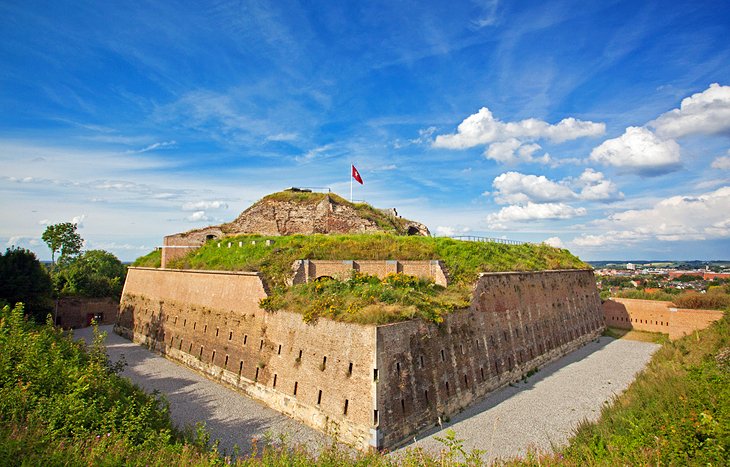
Fort Sint Pieter
Mount Saint Peter (Caestert Plateau), the northernmost section of a
large plateau stretching between Maastricht and the city of Liège in Belgium, is well-known as a nature reserve and recreational area, as well as for the 18th-century Fort Sint Pieter.
It's also famous for the St. Pietersberg Caves, a large system of
tunnels and passages formed over many centuries by the quarrying of
local marlstone. Some 20,000 passages with a total length of 200
kilometers once existed here, some of them enlarged with storerooms, a
bakery, and even a chapel during WWII. Best viewed as part of an English
language guided tour (although self-guided tours are permitted), this
underground maze also offers the chance to see evidence of ancient
fossils.
Address: Luikerweg 71, 6211 ED Maastricht
Official site: www.maastrichtunderground.nl/eng
5 Museum aan het Vrijthof
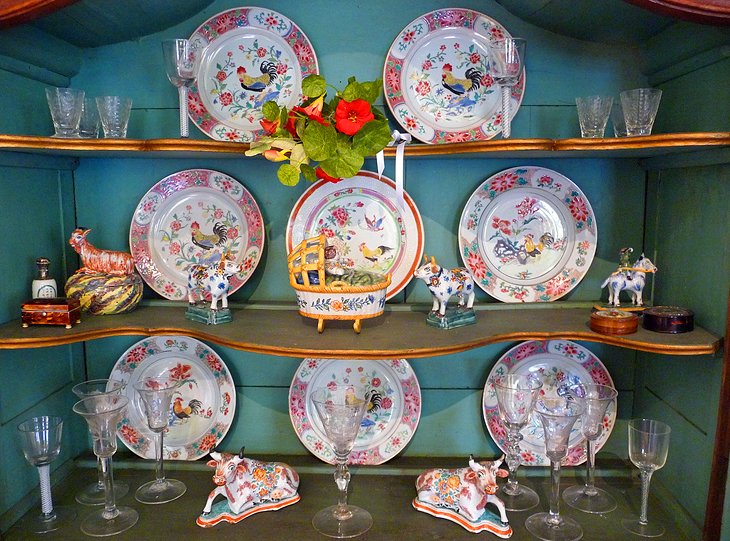
Museum aan het Vrijthof
Cumuluswiki
In the picturesque Vrijthof, one of Maastricht's best-known city
squares, Museum aan het Vrijthof is one of the city's most important
museums. Housed in a 16th-century former home of the Dukes of Brabant,
its collections include paintings, sculptures, furniture displays, and
glasswork from Maastricht. Particular highlights are the Wagner-De Wit
collection of works by 17th-century Dutch and Flemish artists, as well
as paintings from members of the Hague School, plus sculptures from the
Middle Ages. Free English language guided tours are available Wednesdays
from 2pm-3pm.
Address: Vrijthof 18, 6211 LD Maastricht
Official site: www.museumaanhetvrijthof.nl/home.aspx?id=12
6 Walking in Maastricht: Wilhelminabrug and St. Servaasbrug
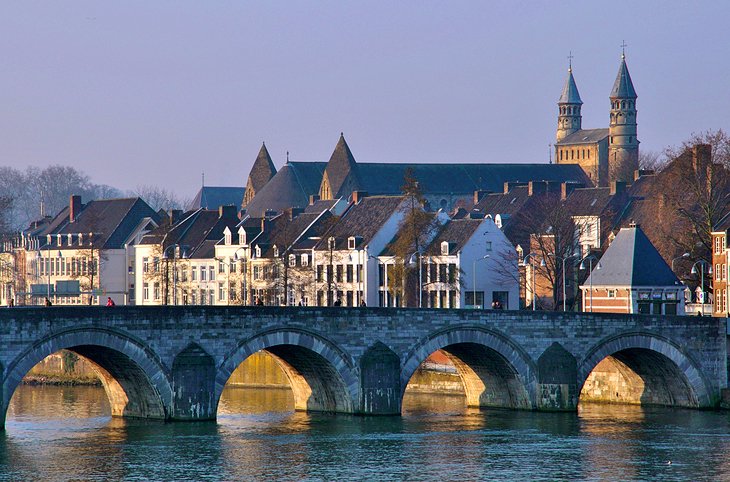
Old bridge in Maastricht
The Wilhelminabrug, a bridge built over the River Maas in the early
1930s, is a good place from which to begin a walking tour of
Maastricht's picturesque riverside districts. From here, head to St.
Servaasbrug, a splendid seven-arched 13th-century bridge notable for its
statue of St. Servatius. Be sure to visit the historic Wijk District on the right bank of the Maas with its remnants of the old town wall. You'll eventually come to the old Town Hall
(Stadhuis) in the Markt. Built in the 1650s as a Cloth Hall, it's
notable for its fine Neoclassical façade with a handsome doorway
approached by an imposing double staircase designed to enable the two
rulers of Maastricht, the Duke of Brabant and the Prince-Bishop of
Liège, to enter simultaneously. Notable features of the interior are its
tapestries, stucco ornamentation, ceiling paintings, and fine
chimneypieces.
7 The Old Town Walls and Hell Gate
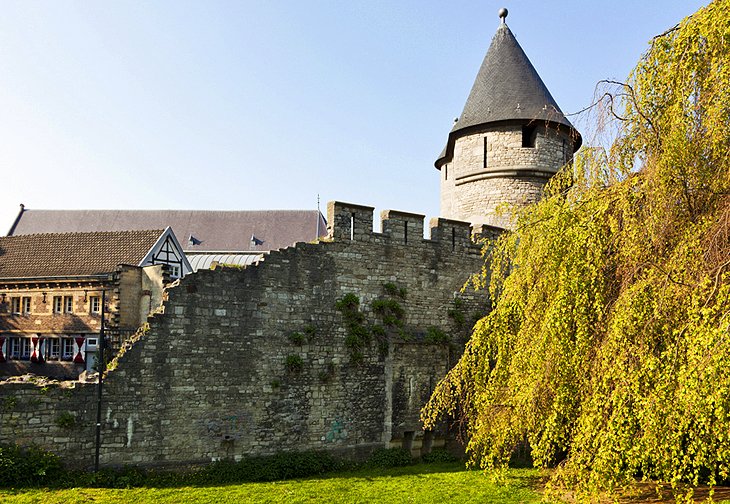
Maastricht Old Town wall
A highlight of Maastricht's Old Town are the remains of the first
circuit of town walls. Built around 1229, the wall's most impressive
sections are Hell Gate (Helpoort) on St. Bernardusstraat, the oldest
town gate in the Netherlands, and the Jeker Tower. Also of note is
Onze-Lieve-Vrouwewal, a stretch of old wall offering fine views over the
municipal park with its old cannons, as well as over the Maas. The
remnants of the town's second circuit of walls date from around 1350.
8 Romantic Valkenburg
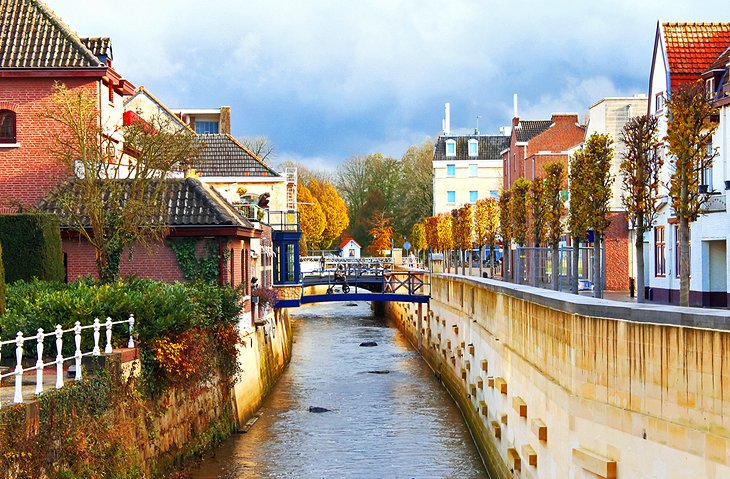
Romantic Valkenburg
Home to the only hilltop castle in the Netherlands, Valkenburg - just
13 kilometers east of Maastricht - has long been a popular holiday
resort thanks to its splendid spas. By far the most popular is Thermae 2000,
one of the country's largest spa establishments and famous for its warm
spring-fed baths and pools, its healing mineral waters, and its
botanical garden. The old town itself is fun to explore. Be sure to
check out St. Nicolaaskerk, a Late Gothic church dating from the
14th century with a splendid triptych depicting scenes from the life of
St. Remigius. Other attractions in the old town are its numerous
handsome old houses, such as 17th-century Huis Den Halder, and the even older 15th-century Huis Ost.
Along the way, you'll also come to the old town walls, remnants of the
14th-century fortifications, along with the two town gates, the
Grendelpoort and the Berkelpoort.
9 Natural History Museum
Although small, Maastricht's Natural History Museum (Natuurhistorisch
Museum Maastricht) is worth a visit. In a former monastery in the
historic Jekerkwartier district, it's notable for its displays
illustrating the geological development of the state of South Limburg
through exhibits of fossils and local rock types. Highlights include a
fascinating cabinet of curiosities where you'll find a rare example of a
"rat king," a group of rats joined together by their tails. A
biological section with collections of regional flora and a botanical
garden on the banks of the River Jeker are also of interest.
Address: De Bosquetplein 7, 6211 KJ Maastricht
10 Museumkelder Derlon
Another of Maastricht's smaller museums worth checking out is Museum
Derlon. In the basement of the Derlon Hotel, the museum focuses on Roman
ruins and artifacts dating from the 2nd to 4th centuries that were
discovered during renovations in the early 1980s. A visit reveals
sections of the old Roman fort, as well a sanctuary that includes parts
of a temple. Other highlights include a section of cobblestone road,
believed to be of Celtic origin; the façade of a sanctuary entrance from
around 150 AD; the base of a statue of Jupiter; remnants of the old
Roman walls and gateway; and numerous items of pottery, glass, and
metal.
Address: Kleine Staat 7, Maastricht
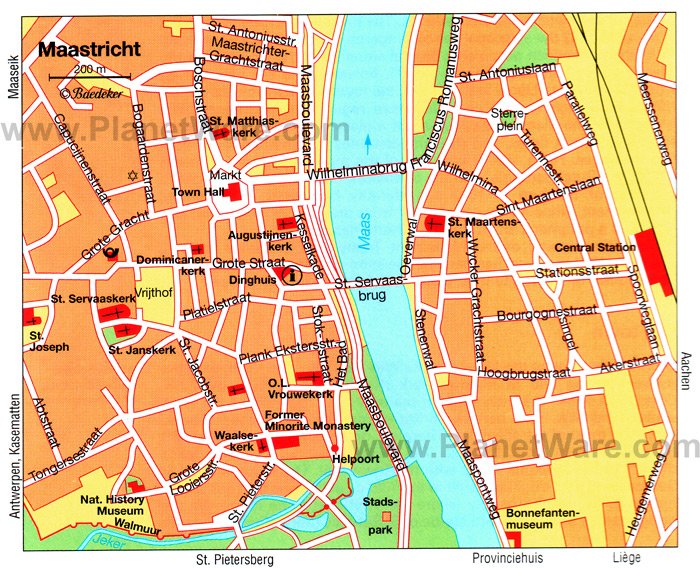 Maastricht Map - Attractions
Maastricht Map - Attractions
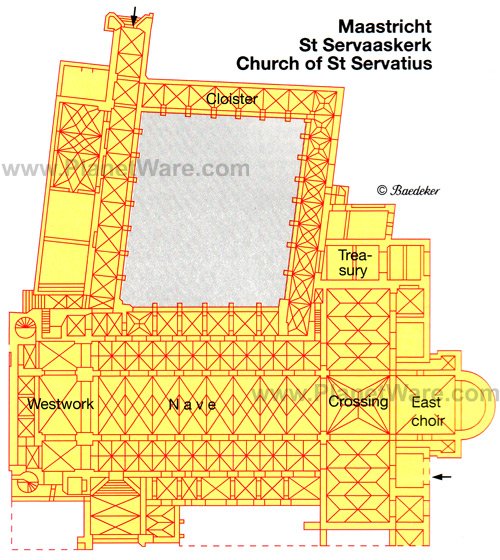
No comments:
Post a Comment